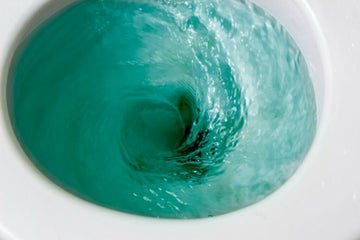Understanding how much water should be in toilet tank is a fundamental aspect of plumbing that directly affects water efficiency and overall functionality. In many households and commercial spaces, the toilet tank plays a crucial role in waste management and hygiene. However, many are unaware of the optimal water level that should be maintained in this essential fixture.
In this article, we will delve into the specifics of toilet tanks, including how much water should be maintained, the implications of incorrect water levels, and practical tips for achieving the ideal setup. This information is invaluable to anyone involved in quality assurance in plumbing or building management. Let's dive in!

Understanding Toilet Tank Mechanics
The toilet tank holds water that is used during flushing. When you press the flush button, the stored water rushes into the bowl, pushing waste away. The correct water level is crucial for both efficiency and effectiveness of the flush.
Generally, a toilet tank should have between 1.6 to 2.0 gallons of water for a standard flush. If the tank is overfilled, it can lead to leaks, while a tank that is too low wont provide sufficient water pressure for a complete flush.
Common Mistakes Regarding Toilet Water Levels
Many people unknowingly make mistakes that can affect the toilet tank water level. Here are some common pitfalls to avoid:
- Neglecting Water Level Adjustments: Many toilets come with adjustable float mechanisms. Ignoring adjustments can lead to overflow or insufficient flushing power.
- Not Checking the Fill Valve: A malfunctioning fill valve can lead to irregular water levels. Regular checks can prevent this problem.
- Ignoring Tank Components: Parts like the flapper and float arm should be functioning well, as they greatly affect the water fill level.
How to Measure Water in Your Toilet Tank
To determine if your toilet is filled to the appropriate level, you can follow these simple steps:
- Open the Tank Lid: Start by removing the lid from the toilet tank.
- Check the Water Line: The water line should be about an inch below the overflow tube. If not, adjustments may be needed.
- Make Adjustments: If the level is too low or too high, adjust the float mechanism until it reaches the optimal height.
For more detailed information on adjusting water levels, you can read through this adjustment guide.
The Role of Water in Toilet Flushing
The volume of water in the toilet tank plays a pivotal role in flushing efficiency. A toilet needs a specific amount of water to function effectively. The common standard is:
- 1.6 gallons: This is the minimum amount required for effective flushing in most modern toilets.
- 2 gallons: Some older models require a slightly higher volume.
Inadequate water levels can lead to poor flushing performance, requiring multiple flushes, which is not only wasteful but also increases water bills. Therefore, maintaining the proper water level in your toilet tank should be a priority.
Dealing with Common Toilet Problems
Issues such as a toilet not filling up properly or fluctuating water levels can arise, usually due to:
- Clogged Fill Valve: This can prevent water from filling the tank properly.
- Broken Flapper: If the flapper isnt sealing properly, water will leak into the bowl and the tank will not fill.
- Incorrect Float Adjustment: If the float is set too low, the tank will not fill adequately.
For insights on why your toilet might not be filling up with water, consider reading this article.
Maintaining Proper Toilet Tank Water Levels
To keep your toilet tank water levels in check, consider the following maintenance tips:
- Routine Inspections: Regularly check your toilet to ensure it is filling to the correct level.
- Keep Parts Clean: Ensure your fill valve and flapper are clean and free from obstructions.
- Make Adjustments as Necessary: Anytime you notice changes in performance, adjust the water level or components accordingly.
For additional toilet maintenance tips, refer to this resource.
Water Waste and Environmental Impact
Maintaining the proper water level in your toilet tank also has wider implications for water conservation efforts. Wasting water in toilets can lead to increased utility bills and unnecessary strain on local water supplies.
By ensuring your toilet tank functions correctly, you're contributing to better water management practices within your community.

Frequently Asked Questions
1. Why is my toilet tank overflowing?
A toilet tank may overflow due to a faulty fill valve or an overly excessive setting on the float. Regular maintenance and adjustments are key to preventing this issue.
2. How do I know if my toilet is using too much water?
If you find yourself flushing multiple times, it could indicate that your toilet is using too much water or not enough. Keep track of your water usage and monitor any irregularities.
3. Can I reduce the water amount without compromising flushing power?
Yes, it is possible to adjust the water level to reduce water use while maintaining sufficient flushing power. Seek professional advice if unsure about making these adjustments.
As an Amazon Associate, I earn from qualifying purchases.






